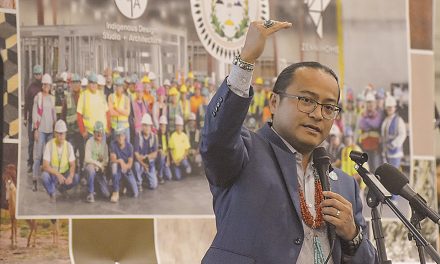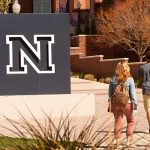
Area Briefs | LA sends crews to hook up Diné homes
FORT DEFIANCE
Navajo Tribal Utility Authority will host electric utility crews from the Los Angeles Department of Water and Power this month in a partnership to extend electricity to Navajo homes.
LA will use this opportunity for rural field training for the crews. The crews will work under harsh weather conditions in rural and isolated locations with no paved roads.
The LA crews will work on projects for six weeks primarily in Western and Central Navajo, including the communities of Kaibeto, Coppermine, Kayenta, Chinle, and Chilchinbeto.
The goal is to connect as many homes as possible.
“LADWP is both excited and humbled to partner with NTUA in a project with such an immense mutual benefit,” said Brian Wilbur, deputy senior assistant general manager. “We are looking forward to a continued relationship that provides much needed training for our workforce with such an important program for the Navajo Nation.”
“This is a wonderful opportunity for everyone involved,” said NTUA General Manager Walter Haase. “Some families will get the electricity they have been patiently waiting for and LA crew members will gain additional experience by working in rural locations. Everyone benefits.”
The partnership is the result of a July meeting between members of the LA City Council and the Navajo Nation. L.A Council members visited the Nation to learn more about utility challenges and the “Light Up Navajo” project.
During their visit, they met with a family that did not have electricity until the 2019 “Light Up Navajo” project delivered the service.
“We appreciate that Los Angeles city leaders took the time to visit and to meet with a family that did not have electricity,” Haase said. “They saw that ‘Light Up Navajo’ is a goodwill mutual aid project that brings lighting and refrigeration – and makes way for other services such as running water and cellular/internet communications. They left with a better understanding.”
St. Mary’s holiday food distributions
PHOENIX – St. Mary’s Food Bank Holiday Distributions of food began Tuesday in Window Rock from 9 a.m. to noon at the Navajo Nation fairgrounds, Wednesday at the Chinle Community Center, today at Kayenta Unified School District and in Kykotsmovi, and Friday at the Western Navajo Fairgrounds in Tuba City.
An Arizona ID is required to receive food donations and one per household will be given out.
There is a limited number of food per location and distributions will continue until supplies run out.
Chief Manuelito Scholars virtual ceremony
WINDOW ROCK – The 133 high school graduates who have earned the Navajo Nation’s highest academic honor – the Chief Manuelito Scholarship – will be honored in a virtual ceremony on Nov. 26 at 10 a.m.
Established in 1980, the scholarship provides $7,000 per academic year for students with high ACT scores matched with grade-point averages.
The Office of Navajo Nation Scholarship and Financial Assistance reports that guest speakers will include President Jonathan Nez, Delegate Paul Begay, interim superintendent of education Patricia Gonnie, former Chief Manuelito Scholar Shandiin Herrera and Winifred Jumbo, dual credit coordinator at Diné College.
Report finds uranium hot spots in Grand Canyon
WASHINGTON – Rep. Raúl M. Grijalva, D-Ariz., on Tuesday hailed the release of a U.S. Geological Survey report on uranium impacts to groundwater in the Grand Canyon region.
The report found generally low concentrations of uranium but did identify uranium hot spots near active and abandoned uranium mining sites.
Sampling sites in the Horn Creek Area, downstream from the abandoned Orphan Lode Mine, showed uranium concentrations nearly 10 times the Environmental Protection Agency’s maximum contaminant level for drinking water.
The Horn Creek Area and the abandoned mine are both within the boundaries of Grand Canyon National Park and close to popular hiking and camping areas, including Bright Angel Trail and Indian Garden Spring.
The USGS study is a partial response to the Department of the Interior’s 20-year withdrawal of the region from new mining claims, which was driven by uncertainties regarding mining’s groundwater impacts.
“Uranium mining near the Grand Canyon is a threat to Arizona’s water, tribal communities and the Colorado River,” said Grijalva. “House Democrats have passed my bill to permanently protect this area multiple times and now the Senate needs to follow suit.”
Uranium mining threatens to contaminate groundwater resources in the region and the Colorado River, which is the primary water source for more than 40 million Americans.
Regional communities, including the Havasupai, Hualapai, Navajo, Hopi, and Kaibab Paiute tribes and the Grand Canyon Village at Grand Canyon National Park rely solely on groundwater to meet their needs.
Agricultural and industrial users in the Southwest also need uncontaminated Colorado River water to survive.








 Highway 264,
Highway 264, I-40, WB @ Winslow
I-40, WB @ Winslow